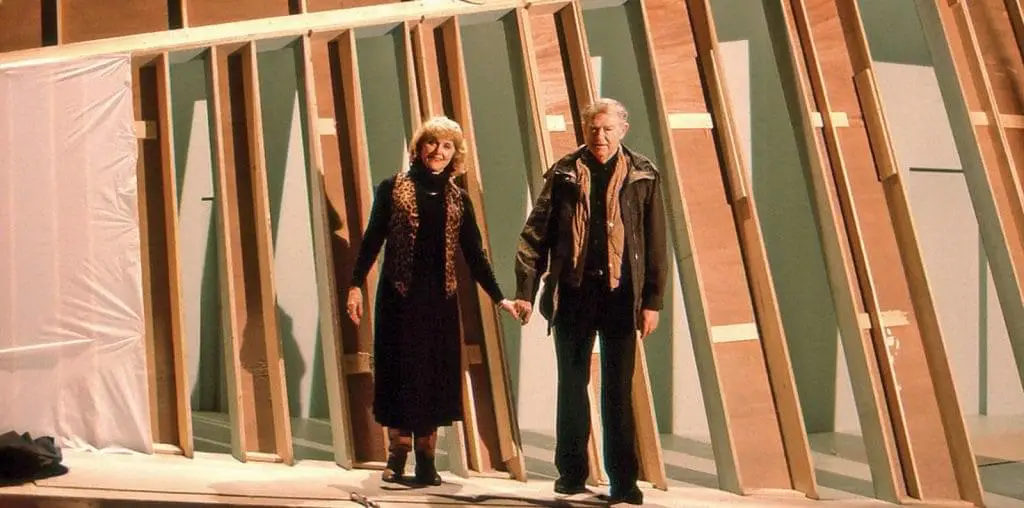
The most beautiful personality in movies today is not some Botox-injected starlet or airbrushed tween queen, but rather a gentle, aging San Francisco hippie named Mark Bittner. With the patience and love of a saint (Saint Francis, to be specific), Bittner has been the protector, historian and provider for a flock of wild parrots who’ve become a highly colorful part of the city’s ecosystem.
The wonderful documentary “The Wild Parrots of Telegraph Hill” explores Bittner’s world, and how these extraordinary birds gave meaning and purpose to his once-aimless existence. A would-be musician who slogged through years of homelessness and menial odd jobs, Bittner found his place in the world some years ago when he began to notice something which most San Francisco residents never bothered to considered: the surprisingly high number of wild red-and-green parrots. The birds were clearly not native to the region (their homeland is in Latin America), and no one was quite certain where they came from or even how long they’ve been in the city (one urban legend has the first generation of wild parrots arriving in the 1920s).
From a dilapidated 19th century cottage on Telegraph Hill, where he lived a squatter’s existence with the somewhat uneasy approval of the property’s owners, Bittner took it upon himself to learn everything about the birds. The majority of the species are cherry-headed conures, although at least one subspecies called a mitred conure (whom Bittner dubbed Olive) was part of the flock. Olive was able to mate with a cherry-headed conure (named Pushkin by Bittner), but another bird was not so fortunate: a blue-crowned conure who was called Connor lost his mate Katherine some years earlier and was unable to cross-breed with the cherry-headed conures. Connor’s distinct personality showed through in his grudging tolerance of his cherry-headed flockmates and the cherry sidekick status of a small parakeet who briefly hung out with him.
Although Bittner would take in parrots who were ill or injured, he never attempted to domesticate the birds. One bird, who became known as Mingus, openly made himself to Bittner’s home — the bird had previously broken a leg and lacked the physical endurance to fly with the wild flock. Another bird, an ailing parrot named Tupelo, became a housemate of Bittner until its death. The soft-spoken Bittner’s mournful elegy for the poor bird is painfully sincere and moving.
Through the birds, Bittner finds his place in the world: as a celebrated writer who documents the lives of the flock and who carefully introduces them to the local residents and the many tourists who pass through his neighborhood. Mercifully, Bittner never exploits his feathered friends or his own celebrity. Not unlike the poor bird Connor, Bittner is in search of a mate and even in his small fame he is frustrated at finding his own connection.
“The Wild Parrots of Telegraph Hill” reminds the audience how the world is full of change, most of which is not for the better. Bittner is eventually evicted from his squatter’s cottage when the landlords decide the property needs updating (he is not welcome back after construction is completed). His departure creates uncertainty if the municipal government will do anything to disrupt the lives of the parrots (Bittner actually takes on City Hall and, for once, government wisely backs down). But the presence of a few hawks does not bode well for the parrots — the big birds obviously kept their distance while Bittner was present, but in his absence they start to become increasingly visible.
Filmmaker Judy Irving shot “The Wild Parrots of Telegraph Hill” in 16mm, and the cinematography is among the most spectacular nature footage imaginable. No digital effects or HD trickery was required to frame the beauty of the parrots in flight. If anything, Irving provides the most eloquent argument against digital video by reminding us what can be accomplished with good old fashioned celluloid.
Irving herself plays a recurring role throughout the film. At first her on-screen appearances seem intrusive, but stick with the film and you’ll find she plays a very surprising and joyful part in the story.
At a time when so many documentaries seem to dwell on the dysfunctional, the corrupt and the profane, “The Wild Parrots of Telegraph Hill” offers a winning celebration of nature’s glory and the beauty of a remarkable man. This is an excellent movie — by all means, flock to it!
